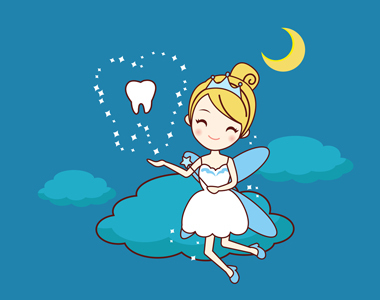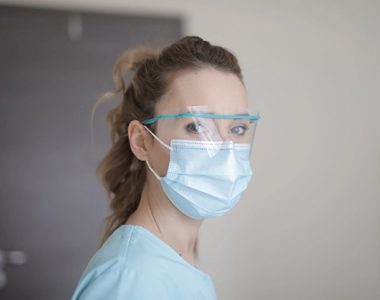
5 Fun Ways to Welcome the Tooth Fairy
Category : Gentalcare
Written by- https://www.mouthhealthy.org/
For generations, the Tooth Fairy has left a small gift for children who hid their fallen baby teeth under their pillow. This charming tradition is the perfect time to help kids learn more about taking care of their teeth. Here are 5 delightful and inexpensive ways to embrace this magical spirit with the whole family.
1. A receipt for your child’s tooth
This little document can be left in your child’s bedroom as a remembrance of the event. Buy a receipt pad and write it out yourself. Include your child’s name, the date, a description of the tooth received, and the reward, plus a small note such as: “Thank you for this lovely tooth! I can see that you are brushing every day. Keep up the good work!”
2. A tooth fairy dish
Here’s a sweet alternative to the under-the-pillow trick (and one that is much easier to access): help your child choose or create a special dish to keep their teeth. Visit a local thrift shop or housewares store to find one, or paint your own at a local ceramics studio. Talk with your child about what she or he thinks might please the Tooth Fairy’s eye … perhaps one that is shiny and bright, like a healthy smile!
3. A keepsake book
A simple blank notebook can be turned into a lasting record of Tooth Fairy’s visits. Invite your child to choose one at an office supply store or bookstore. You can have fun decorating the notebook with your child’s name, hometown and any other details s/he would like the Tooth Fairy to know. Have your child write the Tooth Fairy a note before bed every time he or she loses a tooth. When you leave your child’s gift behind, record the date and add a little note, such as: “This is a very handsome tooth! Did you know you’re on your way to having 32 grownup teeth someday?”
4. A bright-smile calendar
The Tooth Fairy’s visit is a great time to engage kids in healthy dental habits. Along with the Tooth Fairy’s gift, leave a brushing calendar in your child’s room as an extra gift. You can also make it reusable by laminating it at your local office-supply store and provide a colorful dry-erase marker for your child to record each time he or she brushes, flosses, or visits the dentist.
5. A Tooth Fairy “Smilestone” scrapbook page
It can be fun to record how your child’s smile changes as baby teeth fall out and grownup teeth come in. Create a milestone keepsake album of “smilestones” to memorialize each visit from the Tooth Fairy. If you want to make your own, choose an album from the dollar or craft store — or have fun making one together with colored paper, stickers, yarn, and other supplies. You can also just add a scrapbook page to your baby book. Talk with your child about the experience of losing a tooth and capture memories in the pages of the album. Leave it out in your child’s bedroom for the Tooth Fairy to enjoy, too, and consider sharing with the dentist at your next checkup!
https://www.mouthhealthy.org/en/babies-and-kids/playing-the-tooth-fairy

 Review Us
Review Us  Review Us
Review Us 